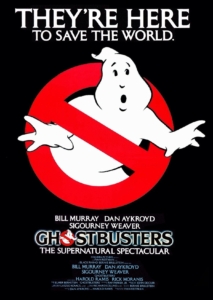Starring: Jordan Myers, Maya Jeyam and Tony White
Directed by: Quinn Armstrong
Rated: NR
Running Time: 80 minutes
Cranked Up
Our Score: 3 out of 5 Stars
When we first meet Mandy (Jordan Myers), she’s waking up, getting showered, listening to catchy pop music and preparing for a great spring break day at a cabin. “Dead Teenagers” quickly dives into tropes, showing all of Mandy’s cliche friends and basically implying that Mandy will most likely be our final girl. Once the chess pieces have been set up, it’s only a matter of time before a psychotic masked man arrives to begin the slicing and dicing. However, our serial killer accidentally dies without a single horny teenager harmed in the process. That’s when the teens find a screenplay, called “Dead Teenagers.”
The first thing that really came to mind about “Dead Teenagers” (the movie, not the script) is “Cabin in the Woods.” It’s kind of hard to escape the shadow of the perfect trope send-up. That initial thought slowly dissolved over time though. While not as clever as the aforementioned film, “Dead Teenagers” shows what happens to all the horror film cliche characters as they grasp that their reality is now confined to a cabin and have their hands on the script. Each character in their own way, becomes the villain in an attempt to survive.
While I won’t say how the insanity unfolds, contorts and eventually concludes, I will state that the film feels more complete if you’ve watched the prior two films, “The Exorcism of Saint Patrick” and “Wolves Against the World,” that Quinn Armstrong has written and directed for his so-called “Fresh Hell” anthology trilogy. A lot of that has to do with the fact that the films have, at points, used similar actors, crew, settings and ideas.
The obvious conceit in all these films, other than being different horror genres, is dealing with emotional truths in an isolated setting. Even then, it’s nothing original, which kind of hampers the whole “fresh hell” idea. What’s kind of interesting about it though, is that “Dead Teenagers” feels like it’s being obvious. The title, the characters, the set-up, everything. What inevitably ends up making it unique is how self-reflective it is on the creative writing process.
Without rehashing the prior two films, and instead focusing on “Dead Teenagers,” what have we learned from the slasher genre? It’s stranger danger, the reflection of serial killers, the punishing of promiscuous teens, the inability to trust men, gender role reversals, racism, gentrification, trauma, unreliable narrators, etc. Mandy could be viewed as the writer, struggling to reinvent the wheel. Since “Wes Craven’s Final Nightmare” and “Scream,” you could make the argument that the slasher genre can only subvert expectations at this point without simply starting the whole process over.
Diving back into the two prior films, we see that attempt being made and getting a mixed bag. Sometimes the reinvention process falls flat or finds a sweet soft spot not yet found, but Armstrong can’t quite do that here. Instead he finds that, just like in this year’s “In a Violent Nature,” the reinvention is finding new and cruel ways to punish the on-screen teens. That all being said, “Dead Teenagers” is better after watching Armstrong’s prior films. Without them, “Dead Teenagers” barely hits the mark.


